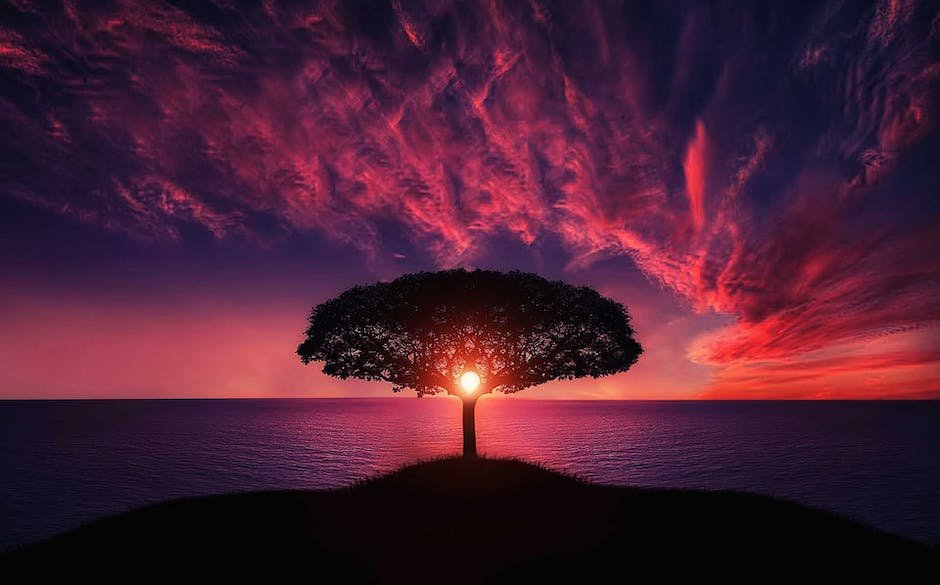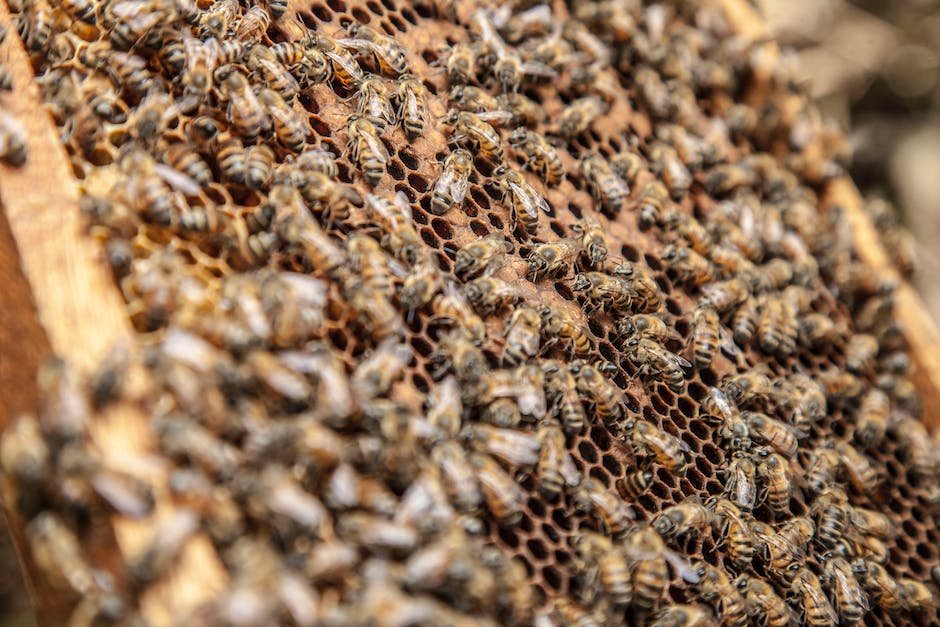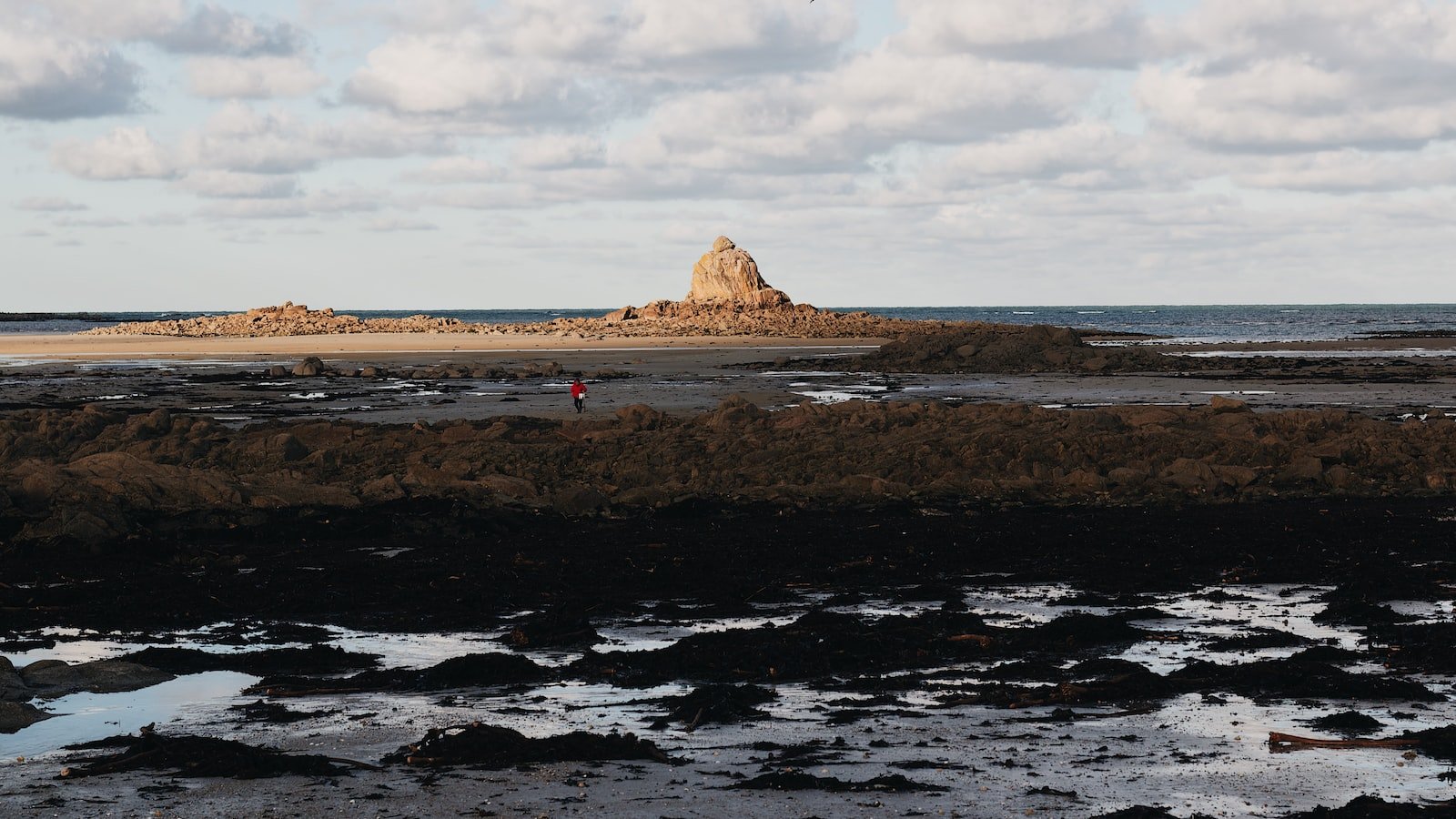Like vibrant brush strokes on a canvas, the colors that adorn a beehive have long captivated the curiosity of scientists and beekeepers alike. Beyond their aesthetic appeal, the hues of a hive play a vital role in the health and well-being of its bustling inhabitants. As Nature’s master chemists, bees have curated a sophisticated language of color that communicates a wealth of information about the hive’s conditions, resources, and even potential threats. This intricate system of pigmentation is a testament to the intricate harmony between bees and their environment. In this article, we delve into the fascinating world of hive color and unravel the secrets it holds, giving us valuable insights into understanding and safeguarding the intricacies of bee health.
Table of Contents
- The Role of Hive Color in Bee Health:
- – Exploring the Importance of Hive Color in Bee Behavior and Heath
- - Understanding the Relationship between Hive Color and Bee Navigation
- – Impact of Hive Color on Temperature Regulation and Disease Prevention
- – Optimizing Hive Color for Enhanced Bee Productivity and Well-being
- – Practical Recommendations for Selecting the Right Hive Color
- Q&A
- In Retrospect

The Role of Hive Color in Bee Health:
When it comes to the health and well-being of our precious buzzing friends, every aspect of their environment plays a vital role. One often overlooked factor that can significantly impact bee health is the color of their hive. Believe it or not, hive color has a profound effect on these hardworking insects for several reasons.
- Temperature regulation: The color of the hive can influence the temperature inside. Dark-colored hives absorb more heat from the sun, creating a warmer environment for the bees. This can be beneficial in cooler climates but can lead to overheating during scorching summers. On the other hand, lighter-colored hives reflect more sunlight, helping to maintain a cooler and more comfortable temperature for the bees.
- Predator evasion: The color of the hive can also affect the bees’ ability to evade predators. For instance, darker-colored hives may attract more attention from predators like bears or woodpeckers, who associate darker shades with potential food sources. In contrast, a lighter-colored hive may be less attractive and provide a better chance for bees to remain undisturbed.
It is important for beekeepers to consider these factors when choosing the color of their hives, as it can impact the health, productivity, and overall well-being of their bee colonies. By creating an optimal environment for our buzzing companions, we can contribute to their thriving existence and the conservation of these essential pollinators.

– Exploring the Importance of Hive Color in Bee Behavior and Heath
Exploring the Importance of Hive Color in Bee Behavior and Health
When it comes to the fascinating world of honeybees, the significance of hive color should not be underestimated. Though it may seem like a trivial detail, the color of a hive plays a crucial role in bee behavior and overall hive health. Research has shown that hive color influences various aspects of a bee colony, ranging from foraging patterns to disease resistance.
Foraging Efficiency: The color of a hive’s exterior can significantly impact a bee’s ability to navigate back to its colony. Bees are incredibly visual creatures, and they rely on memory and distinct visual cues to locate their home. A hive painted with bright and vibrant colors can act as a visual beacon, making it easier for individual bees to return safely, especially when located in dense environments.
Temperature Regulation: Hive color also plays a crucial role in maintaining optimal hive temperature. Dark-colored hives absorb more heat from sunlight, which can be beneficial in colder climates as it helps regulate internal temperature during winter months. Conversely, light-colored hives reflect more light, preventing excessive heat buildup in warmer regions, thus preventing overheating and potential stress on the colony.
Disease Prevention: Another aspect influenced by hive color is disease prevention. Certain colors have been found to deter certain pathogens or pests that can harm bee colonies. For instance, studies suggest that lighter-colored hives are less attractive to varroa mites, a common parasite that feeds on bees and weakens the hive. Choosing the right hue for a hive could potentially reduce the risk of infestations and contribute to the overall health and longevity of the colony.
In conclusion, the color of a beehive may seem inconsequential at first glance, but it carries significant implications for bee behavior and health. From aiding foraging efficiency and temperature regulation to disease prevention, the color of a hive can profoundly impact the well-being of the entire colony. Therefore, when it comes to beekeeping, carefully considering hive color should not be overlooked.

– Understanding the Relationship between Hive Color and Bee Navigation
Understanding the Relationship between Hive Color and Bee Navigation
In the intricate world of bees, their ability to navigate through vast distances with pinpoint precision is awe-inspiring. Interestingly, recent studies have revealed a remarkable correlation between hive color and bee navigation. It turns out that the color of a hive plays a pivotal role in guiding bees back home.
Color cues: Bees rely heavily on visual cues, and their acute color perception helps them recognize their hive from afar. Research has shown that certain shades and patterns catch their attention more effectively than others. For example, vibrant hues like yellow, blue, and white tend to stand out against the natural surroundings, guiding bees back to their respective hives more effortlessly.
Pattern recognition: Besides color, bees are also highly skilled at recognizing patterns. When a hive is adorned with unique and distinct patterns, it serves as a visual aid for navigation. Intricate patterns, whether in the form of concentric circles or zigzag shapes, assist bees in memorizing the location of their hive and quickly finding their way back, even when faced with challenging environmental conditions.
Implications: Understanding the intricate relationship between hive color and bee navigation has significant implications for beekeepers and conservationists. By strategically choosing hive colors and patterns, beekeepers can enhance their bees’ homing abilities and combat problems like honeybee loss due to disorientation. Additionally, this knowledge can aid in designing bee-friendly environment and conservation practices, ultimately benefiting the health and well-being of entire bee populations.
– Impact of Hive Color on Temperature Regulation and Disease Prevention
Exploring the Intricate Connection:
When it comes to honeybee colonies, the color of their hives might seem like a mere aesthetic choice. However, recent research has shed light on the impact that hive color has on temperature regulation and disease prevention within bee populations. This intriguing connection unravels a fascinating aspect of honeybee behavior and their interplay with their surrounding environment.
Thermoregulation and Hive Color:
One of the crucial elements for a thriving honeybee colony is maintaining the optimal hive temperature for brood rearing and overall colony health. Beekeepers have long known that dark-colored hives tend to absorb more heat from sunlight, while lighter-colored hives reflect it. Researchers have now found that hive color contributes significantly to honeybee thermoregulation.
- Dark-colored hives absorb and retain more heat, ideal for cooler climates or during the winter months when bees cluster to keep warm.
- Light-colored hives reflect excess heat, preventing overheating and assisting honeybees in coping with scorching summers or hotter climates.
- The ability to modulate hive temperature improves brood survival rates, enhances honey production, and strengthens overall colony resilience.
Defense Against Pests and Diseases:
Interestingly, hive color also plays a role in preventing and minimizing the impact of pests and diseases on bee colonies. Certain pathogens and parasites are attracted to specific wavelengths of light, making hive color a natural defense mechanism for honeybees.
- Light-colored hives minimize the attraction of Varroa mites, which often target bees by sensing certain wavelengths of light.
- Dark-colored hives, on the other hand, discourage wax moth infestations, as these pests are repelled by the heat absorption properties of darker colors.
- The strategic choice of hive color can thus contribute to disease prevention and significantly reduce the risk of infestations and hive loss.
By understanding how hive color influences temperature regulation and disease prevention, beekeepers can make informed decisions when setting up and maintaining apiaries. This knowledge empowers them to support healthier honeybee populations and ensure their crucial role as pollinators is preserved for generations to come.
– Optimizing Hive Color for Enhanced Bee Productivity and Well-being
Creating an optimized hive color can significantly impact bee productivity and overall well-being. The color of a beehive plays a crucial role in attracting bees, as different colors have varying effects on their behavior and health.
When choosing a hive color, it is important to consider the natural preferences of bees. Research suggests that bees are more attracted to colors found in their natural environment, such as shades of green, blue, and yellow. These colors mimic the vibrant flora that bees are naturally inclined to forage from, ultimately increasing their productivity and overall well-being.
Beyond color preference, hive design and placement are also key factors in optimization. Ensuring good ventilation, proper insulation, and adequate space for bee movement can greatly enhance their productivity. Additionally, strategically placing hives in areas with ample sunlight and protection from harsh weather conditions can contribute to the overall well-being of the bee colony.
Benefits of Optimized Hive Color:
- Increased foraging efficiency: Bees are naturally attracted to specific hues, making it easier for them to locate their hive and return to it efficiently. This enhanced navigation can lead to increased foraging efficiency and higher yields of honey and pollen.
- Reduced stress: An optimized hive color promotes a calm environment for bees, reducing their stress levels. This tranquility can positively impact their health, immunity, and overall productivity.
- Enhanced queen bee productivity: A well-designed and colored hive can positively influence the behavior and productivity of the colony’s queen bee. It creates a welcoming and harmonious atmosphere for her to lay eggs, leading to the growth and strength of the colony.
By focusing on optimizing hive color, beekeepers can create an environment that promotes the well-being and productivity of their bee colonies. Implementing colors that mimic the surrounding environment, combined with proper hive design and placement, can lead to more content and thriving bees.
– Practical Recommendations for Selecting the Right Hive Color
Practical Recommendations for Selecting the Right Hive Color
Choosing the right color for your beehive can have more significance than you might initially think. Not only does it enhance the aesthetic appeal of your apiary, but it can also impact the well-being and productivity of your buzzing companions. Here are some practical recommendations to help you make the best decision:
- Consider the climate: Bees are creatures of habit and have specific preferences when it comes to temperature. Light-colored hives, such as white or pastels, reflect sunlight and heat, keeping the hive cooler in hot climates. Darker hues, such as greens or browns, absorb heat and are more suitable for cooler environments.
- Blend with surroundings: When selecting a hive color, take into account the landscape and surroundings of your apiary. Opting for natural tones like beige or tan can help the hive blend seamlessly into the environment, reducing any disruptive impact on your bees.
- Consider visibility: While aesthetics and harmony with nature are important, easy identification of hives is equally crucial. Bold and vibrant colors, such as bright blues or yellows, can make it easier to locate your hives among foliage or from a distance.
- Minimalist or artistic: If you have an artistic inclination, consider painting intricate designs or patterns on your hive. Not only will this make your apiary visually captivating, but it can also serve as a unique identifier for your buzzing friends.
Remember, the color of your beehive is not merely a superficial choice. It can have practical implications for both your bees and your apiary. So, let your creativity flow while keeping these practical recommendations in mind, and select the perfect hive color that combines functionality and beauty!
Q&A
How does hive color affect bee health?
Hive color plays a crucial role in bee health as it affects temperature regulation within the hive. Dark-colored hives absorb more heat, which can raise the internal temperature to harmful levels, while light-colored hives reflect heat, helping to maintain a comfortable environment for bees.
Can hive color impact bee behavior?
Yes, hive color can influence bee behavior. Bees tend to be attracted to brighter colors, so a vibrant hive might attract more foragers and help maintain a strong colony. However, there are other factors at play, such as location, genetics, and quality of forage that also impact bee behavior.
What are the advantages of painting hives in lighter colors?
Painting hives in lighter colors can provide numerous benefits. Light-colored hives reflect sunlight, preventing overheating during hot weather and reducing stress on bees. Additionally, lighter colors make it easier for bees to locate their hive, reducing navigation errors and saving their energy.
Are there any disadvantages to using light-colored hives?
While light-colored hives offer several advantages, they may not be suitable for all climates. In colder regions, darker hives can absorb more heat, providing insulation during winter months. It is important to consider the local climate and conditions when choosing hive color for optimal bee health.
Can hive color affect the vulnerability of honey bees to pests and diseases?
Hive color alone does not directly impact the vulnerability of honey bees to pests and diseases. However, light-colored hives allow beekeepers to better detect certain pests, such as varroa mites, which can affect bee health. Regular monitoring and proper hive management practices are crucial in combating these challenges.
How should beekeepers choose the right hive color?
When choosing hive color, beekeepers should consider various factors. In hot climates, lighter colors are generally recommended to prevent overheating. Conversely, in colder regions, darker colors can assist with insulation during winters. Ultimately, beekeepers should adapt their choice to local climate, seasonal variations, and the health needs of their specific bee colonies.
In Retrospect
In a world where nature’s intricate tapestry ceaselessly unfolds, the humble honeybee emerges as a remarkable marvel, captivating scientists and enchanting beekeepers with its cryptic secrets. As we delve deeper into understanding their complex society, an alluring tale of hive colors emerges, painting a picture entwined with shades of mystery, purpose, and harmony.
Through the ages, honeybees have perplexed inquisitive minds with their inexplicable preference for various hues. From vibrant yellows and serene whites to deep burgundies and earthy browns, each shade carries its significance, subtly orchestrating the dance of life within the hive. Striking a perfect balance between the visible and the hidden, hive colors stand as both a silent messenger and the guardian of bee health.
Imagine the grandeur of an autumnal sunrise, where vivid hues cascade upon golden wings. The harmonious symphony of a thriving colony proudly resonates, resonating with the melodic hum of contentment. Bees bask in the radiance of a yellow hive, their sensitive eyes absorbing the vibrant pigment like drops of nectar. A spectrum of brightness echoing the abundance of pollen-rich meadows beyond the hive’s wooden walls. In this visual feast, the honeybees find solace, fostering a vibrant environment for the nurturing of brood and the storage of precious honey reserves.
Yet, the bees’ astute wisdom doesn’t simply end with yellow. As spring showers kiss the earth, a sea of purples, pinks, and blues blooms into existence, and the whispers of life’s ephemeral beauty are etched upon delicate bee wings. A whimsical wonderland arises, and the gentle souls of honey gather nectar and pollen amidst the embracing embrace of lavender and lilac hues. Here the hive stands resolute in its serenity, guiding each buzzing individual with a sense of calm and purpose. For as we delve into the ethereal world of bees, it becomes evident that colors serve as a beacon of unity, a palette guiding these diligent pollinators through the intricate patterns of their hive’s labyrinthine pathways.
But beyond the idyllic meadows and tranquil horizons, somber shades dwell and reveal the profound complexities of the honeybee’s realm. Burrowed within the shadows of the woodland canopy, these hues of dark mystery manifest themselves in brooding greys and solemn blacks. A canvas for resilience, these hues symbolize the struggle, the determined survival against the looming terrors, and the ceaseless quest to protect the hive’s delicate equilibrium. Here, harmony takes on a different form, forged through an unyielding solidarity befitting the darkest tones.
In the tapestry of life, hive colors serve as a profound testament to the interconnected harmony pulsating within every crevice of the honeybee’s world. They embody a language worthy of admiration, whispering secrets that only a discerning eye and empathetic heart can truly comprehend. As we continue to unravel nature’s subtle weavings, may we forever cherish the iridescent beauty that hive colors bring, and may they guide our efforts towards the protection and prosperity of these humble architects of the natural kingdom. A kingdom where vibrant yellows, entrancing purples, and brooding blacks converge to create a symphony worth preserving—for the sake of the bees, and for the sake of our own ceaseless wonder.
As an affiliate, my content may feature links to products I personally use and recommend. By taking action, like subscribing or making a purchase, you’ll be supporting my work and fueling my taco cravings at the same time. Win-win, right?
Want to read more? Check out our Affiliate Disclosure page.